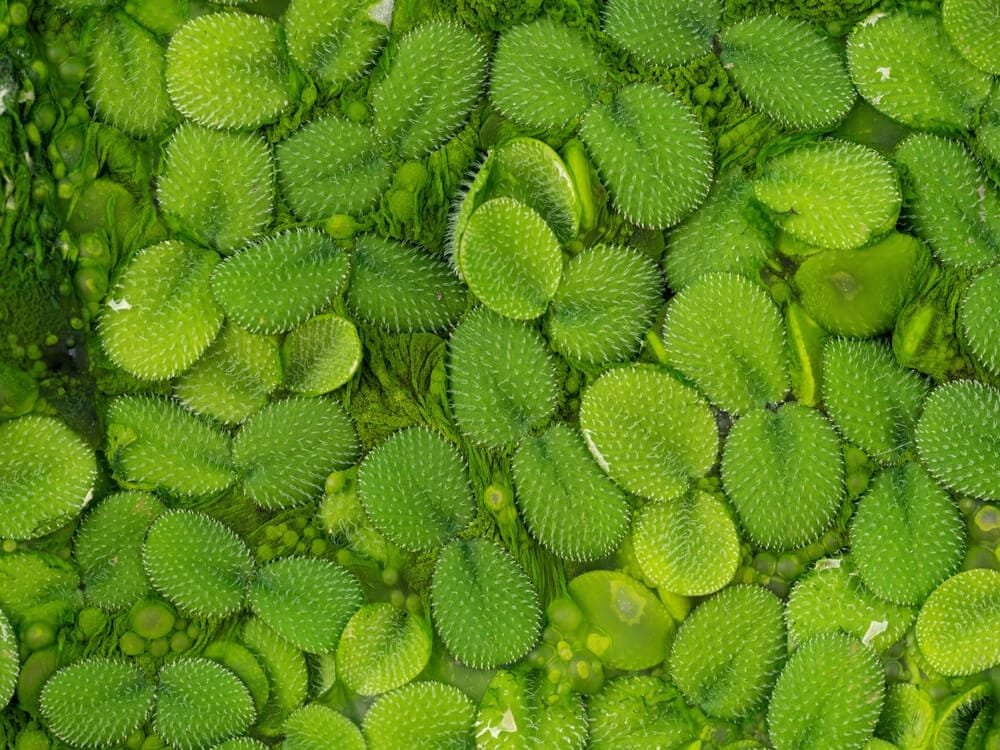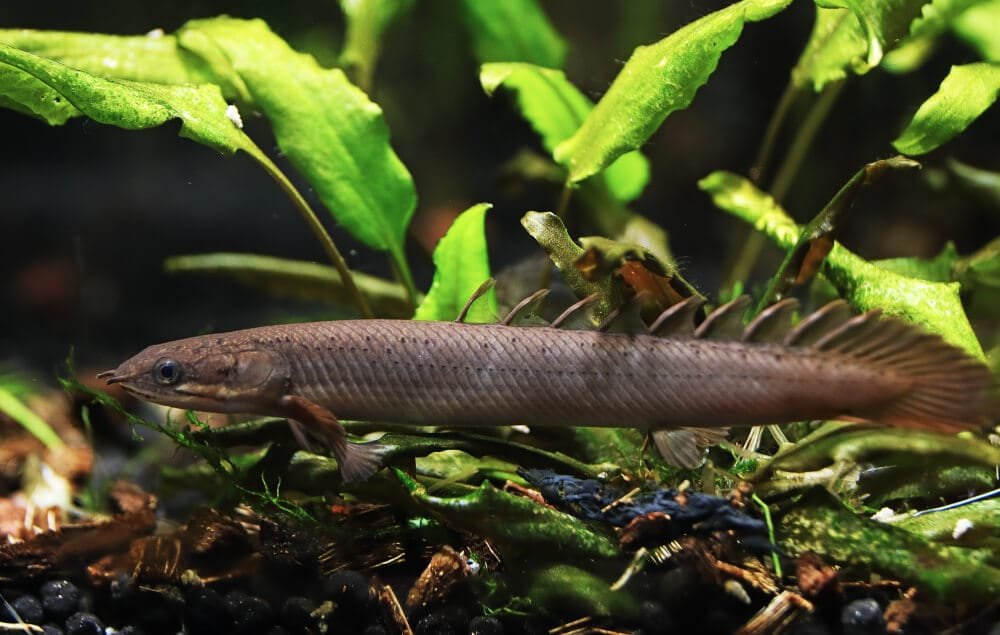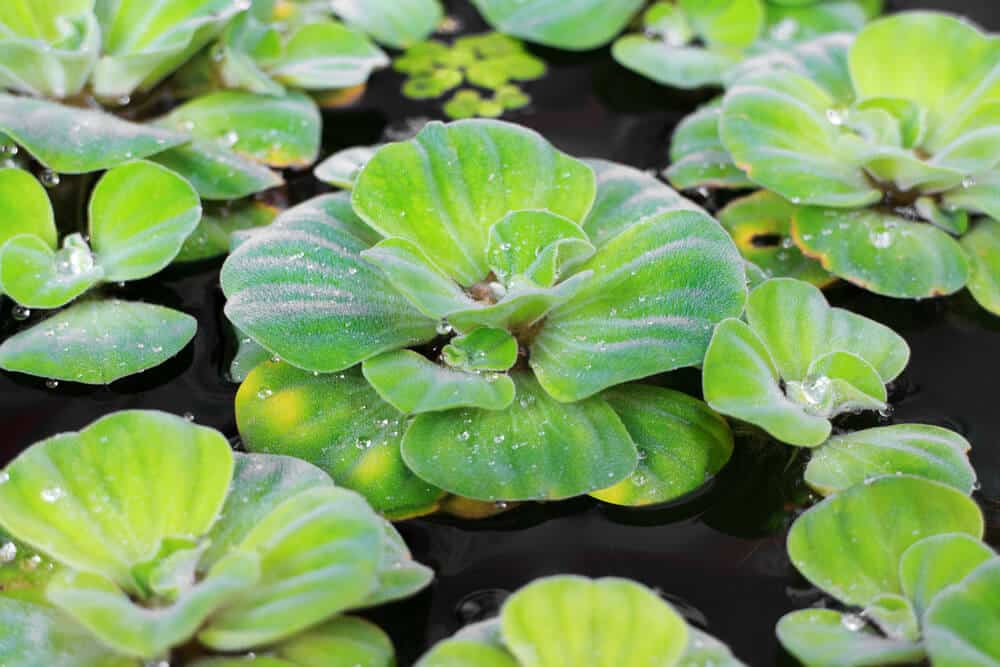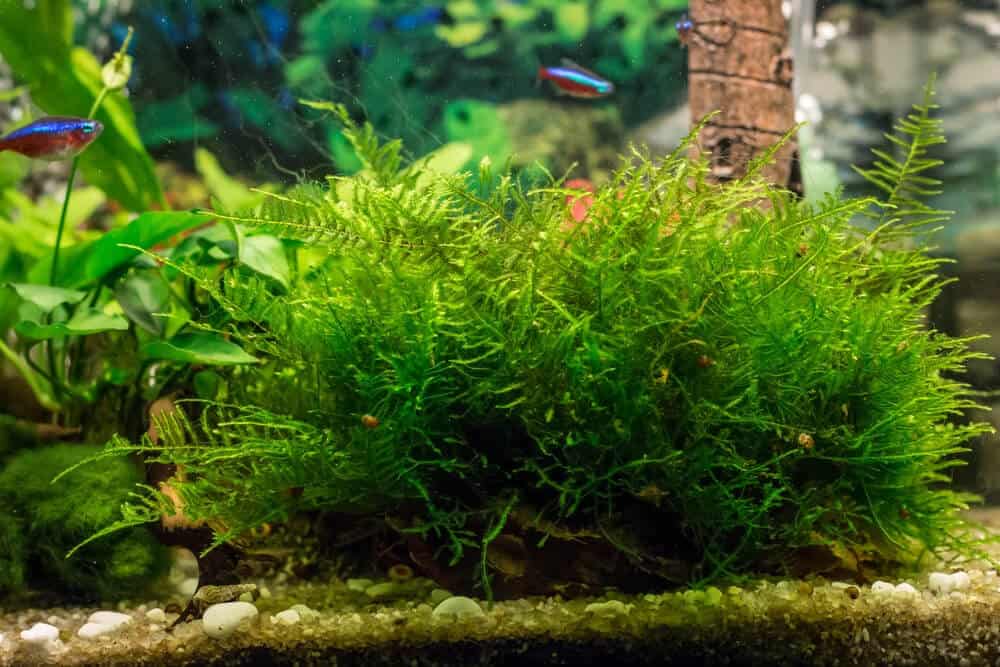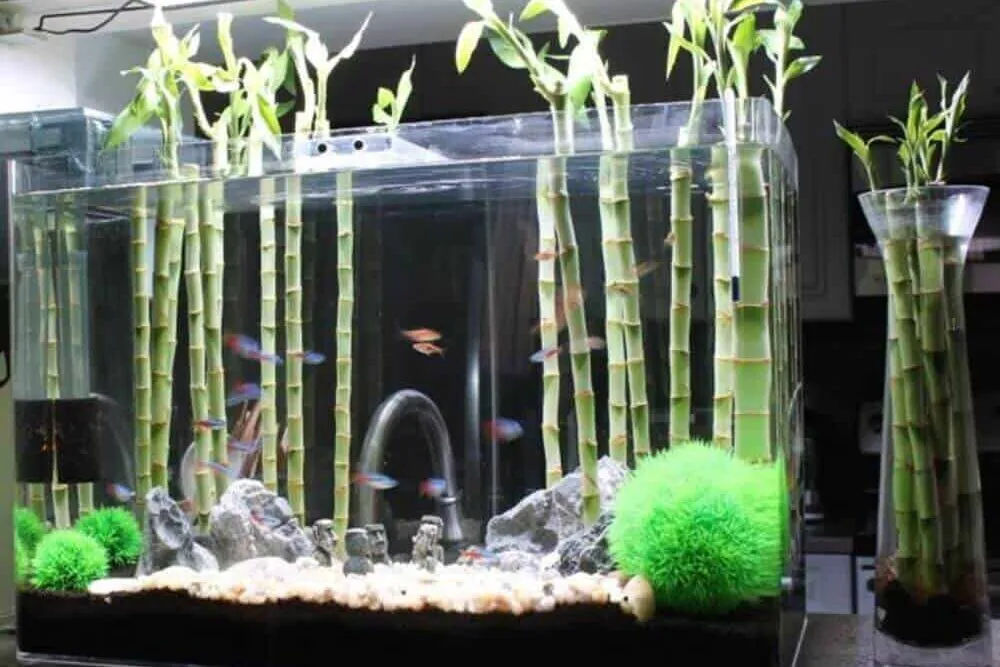Did you know a single Salvinia natans water fern can cover up to 50% of a water surface in just two weeks? This amazing free-floating aquatic plant has caught the eye of aquarium fans and scientists all over the world.
The salvinia natans, also known as floating fern, is a fascinating member of the Salviniaceae family. It’s known for its ability to grow well in many water types, from slow rivers to aquariums.
As an invasive species, salvinia natans grows fast and needs little care. This makes it a great choice for both new and seasoned aquarists looking to improve their water worlds.
This guide will take you into the world of salvinia natans. We’ll look at its traits, care needs, and its role in nature. Whether you’re a hobbyist or a pro, get ready to learn about this incredible water fern.
Introduction to Salvinia Natans (Floating Fern)
Salvinia natans is an interesting aquatic weed that has caught the eye of many. It grows well in freshwater and helps manage ecosystems. Its beauty is more than skin deep.
Quick Stats and Overview
| Characteristic | Details |
|---|---|
| Scientific Name | Salvinia natans |
| Family | Salviniaceae |
| Common Names | Floating Fern, Water Butterfly Wing, Floating Watermoss |
| Habitat | Freshwater environments |
| Temperature Range | 60°F to 70°F |
The leaves of Salvinia natans are special. They float on water. This weed grows fast, which is good for the environment.
Key Benefits for Aquariums
- Provides natural biological control for algae growth
- Helps maintain water quality through nutrient absorption
- Creates shelter for small aquatic organisms
- Assists in eutrophication prevention
Historical Background
Salvinia natans comes from Africa, Asia, and Europe. It has been around for a long time. Archaeologists found it in the Rhine/Meuse delta from the Middle Holocene.
A living testament to nature’s adaptive capabilities, Salvinia natans continues to fascinate researchers and aquarium enthusiasts alike.
Natural Habitat and Distribution
Salvinia natans is a fascinating sporophyte found in many water bodies around the world. It grows well in central and eastern Europe, Asia, and parts of Africa. This shows how well it adapts to different pond environments.
The plant’s natural home includes:
- Steady freshwater areas
- Slow rivers
- Water gardens
- Shallow ponds
Salvinia natans is great at absorbing nutrients. It does well in certain conditions:
- Full sun to partial shade
- Neutral to slightly acidic pH
- Little water movement
“Nature’s perfect water purifier, floating effortlessly across global landscapes.” – Aquatic Ecology Research Team
This amazing plant can’t live when fully underwater. It thrives on the water’s surface. It’s found in many places, showing it can handle different climates well.
Physical Characteristics and Plant Structure
Salvinia natans has a unique structure that makes it stand out. Its shape is key to managing water quality and adapting to its environment. This is important for keeping the water healthy.
Leaf Morphology
The plant has pinnate leaves that spread out on the water’s surface. Salvinia natans has two main types of leaves:
- Floating leaves: About one inch in diameter
- Submerged leaves: Around half an inch long

Root System
Salvinia natans has a special root system. It has rhizoids that hang below the water. These help the plant get nutrients and support its growth.
Growth Pattern
Salvinia natans grows fast and can spread quickly. It can double its biomass in just two days. This makes it a fast-growing plant.
| Growth Characteristic | Measurement |
|---|---|
| Biomass Doubling Time | 2 days |
| Population Density | Up to 320 specimens per square meter |
| Reproduction Method | Spore-based propagation |
The plant’s adaptability to various water temperatures and light requirements makes it an exceptional candidate for diverse aquatic environments.
Water Parameters and Environmental Requirements
Salvinia Natans grows best in certain water conditions. These conditions are key for its growth and how it covers the water surface. Knowing these environmental needs is important for keeping this floating fern healthy in water.
- pH Levels: Prefers a neutral range between 6.0 and 7.5
- Water Temperature: 68°F to 82°F (20°C to 28°C)
- Dissolved Oxygen: Requires well-oxygenated water
- Water Depth: Adaptable to various depths, but performs best in shallow to medium-depth environments
“Maintaining the right water parameters is essential for controlling the plant density and preventing invasive Salvinia Natans.”
The plant’s floating leaves are key in absorbing nutrients from the water. This special ability helps Salvinia Natans grow well in both rich and poor nutrient waters.
| Parameter | Optimal Range | Impact on Growth |
|---|---|---|
| pH Levels | 6.0 – 7.5 | Supports healthy growth and nutrient absorption |
| Temperature | 68°F – 82°F | Promotes rapid propagation |
| Light Intensity | Medium to High | Enhances photosynthesis and surface coverage |
Aquarists need to watch out for the plant’s invasive nature. Salvinia Natans is great for cleaning water and making oxygen. But, it can quickly take over the water surface if not kept in check.
Pro Tip: Regular trimming helps control plant density and prevents complete surface coverage in aquariums and ponds.
Lighting and Temperature Needs
Knowing how to care for Salvinia Natans is key for a thriving aquarium. This floating fern grows well in many tropical and temperate zones. It’s a great pick for anyone who loves aquariums.
Light Intensity Requirements
Salvinia Natans does best with light that’s not too bright or too dim. Its roots and leaves react to light in unique ways. The best light for it is:
- 6-8 hours of indirect light per day
- Moderate brightness levels
- Avoiding intense direct sunlight
Optimal Temperature Range
Water movement and temperature are vital for Salvinia Natans’ health. It loves the warm temperatures of tropical places. The perfect range for it is:
| Climate Zone | Temperature Range | Plant Response |
|---|---|---|
| Tropical | 20°C – 30°C (68°F – 86°F) | Optimal Growth |
| Subtropical | 18°C – 28°C (64°F – 82°F) | Good Adaptation |
| Temperate | 15°C – 25°C (59°F – 77°F) | Slower Growth |
Seasonal Adjustments
Adjusting to the seasons is important. Keep an eye on the environment and make changes slowly. This helps the plant stay healthy.
“Successful Salvinia Natans cultivation demands understanding its natural habitat and mimicking those conditions.” – Aquatic Plant Experts
With the right light and temperature, your aquarium can be a beautiful home for Salvinia Natans.
Propagation and Growth Management
Salvinia natans grows fast, spreading out over water surfaces. It makes tiny shoots and spores for quick growth. Getting nutrients is key to its rapid expansion.
Knowing what Salvinia natans needs to grow is important. The water’s hardness affects its growth and how well it makes food. Keep an eye on these to keep your plants healthy.
- Propagation methods:
- Spore reproduction
- Vegetative fragmentation
- Surface expansion through horizontal growth
- Growth management techniques:
- Regular pruning
- Nutrient level monitoring
- Controlling buoyancy
“Control your Salvinia natans before it controls your aquatic ecosystem”
Salvinia natans’ leaves help it cover a lot of water. It can get very dense, up to 30,000 plants per square meter. Managing it well is key to stop it from taking over.
| Growth Parameter | Typical Value |
|---|---|
| Life Span | 130-200 days |
| Growth Rate | Rapid horizontal expansion |
| Density Potentia | 30,000 plants/m² |
To grow Salvinia natans well, you need to balance its growth with keeping the ecosystem in check. Aquarists must use smart management to make the most of this amazing plant.
Tank Setup and Placement Options
Creating the perfect home for Salvinia Natans needs careful thought on tank design and conditions. Aquarium fans can grow this unique floating fern well by knowing its growth and care needs.
Selecting the Right Aquarium
For Salvinia Natans, focus on surface area over depth. Riparium experts suggest tanks with lots of space for the plant to grow. Here are some key tips for placement:
- Go for wide, shallow tanks with lots of surface area
- Make sure roots stay under water while leaves float
- Keep the light medium to high
Companion Plant Considerations
Good tank setups mix Salvinia Natans with the right plants. New aquarium owners should pick plants that help fight pests and diseases.
- Stay away from aggressive rooted plants that compete for food
- Pick calm, slow-growing water plants
- Watch how plants change with the seasons
Space and Maintenance Requirements
Salvinia Natans needs special care due to its growth habits. It grows more in summer and rests in winter. Regularly remove extra plants to keep the tank healthy.
“Successful aquatic plant management is about understanding each species’ unique environmental needs.”
Common Problems and Solutions
Keeping Salvinia Natans healthy needs careful attention. Aquarists face challenges that can harm these delicate plants.
Nutrient Management and Growth Challenges
Floating plants like Salvinia Natans are key in water purification and keeping the ecosystem diverse. Yet, they face common problems:
- Yellowing Leaves: Shows they might not have enough nutrients
- Overgrowth: Can upset the ecosystem’s balance
- Root Rot: Happens when water doesn’t move well
Troubleshooting Strategies
| Problem | Solution | Impact on Biofilter |
|---|---|---|
| Nutrient Deficiency | Add balanced liquid fertilizer | Restores nutrient absorption |
| Excessive Growth | Remove extra plants by hand | Keeps the ecosystem balanced |
| Poor Circulation | Make water move better | Stops root rot |
Proper management of companion plants ensures a thriving aquatic environment.
Watching how plants grow naturally helps avoid problems. Regular care and knowing what Salvinia Natans needs can turn challenges into chances for a healthy aquarium.
Benefits for Aquatic Ecosystems
Salvinia Natans is key to keeping water environments healthy. This floating plant is not just pretty. It also helps in many ways. Growing aquatic plants like this is loved by many.
Water Purification Properties
This plant is great at managing water quality. It takes in extra nutrients, stopping algae from growing. It acts like a natural filter, making the water better.
Habitat Creation
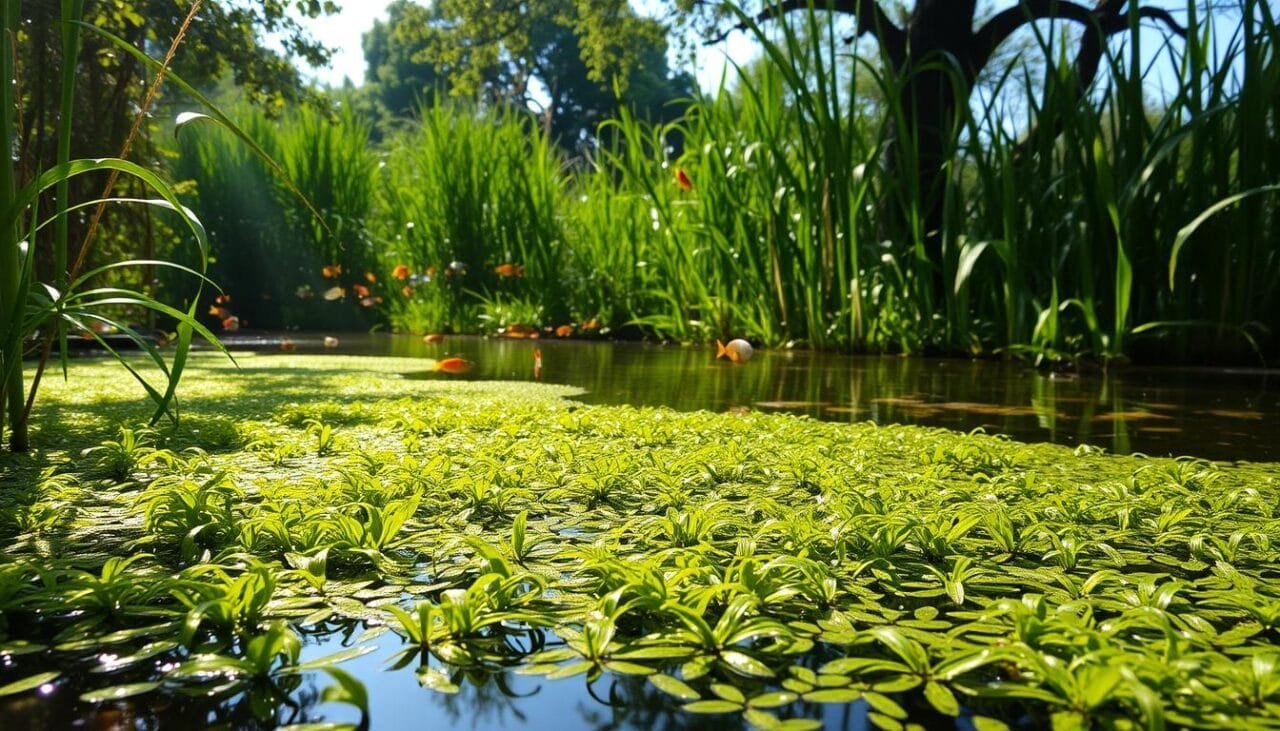
Experts say Salvinia Natans is vital for creating habitats. Its size and color offer a safe place for:
- Small fish fry
- Aquatic microorganisms
- Invertebrate species
Ecological Impact
Planting Salvinia Natans helps balance the water ecosystem. Salvinia Natans makes oxygen, supports life, and helps the environment stay stable.
Salvinia Natans turns water spaces into living, breathing worlds.
| Ecological Benefit | Impact Level |
|---|---|
| Nutrient Absorption | High |
| Oxygen Production | Moderate |
| Habitat Creation | Significant |
Conclusion
Salvinia Natans is a standout aquatic plant. It’s great for water circulation and managing ecosystems. It covers the surface while keeping water clear, making it perfect for both natural and artificial water spaces.
This plant thrives in many water conditions. It helps control nutrient levels and keeps algae in check. Experienced aquarists and nature lovers see its value in improving water habitats.
Salvinia Natans boosts light and air in water spaces. It grows fast and cleans water, removing pollutants in just 6-7 days. This shows its big role in keeping water healthy.
To grow Salvinia Natans, you need to manage humidity and know its needs. It lives for 130-200 days, giving time for good water care. It’s great for home aquariums or ecological projects, making water spaces lively and healthy.
Using Salvinia Natans helps make water spaces better and more beautiful. It’s a key plant for those who love water and want to protect the environment.
FAQ
What is Salvinia Natans?
Salvinia Natans is a floating fern from Central Europe. It loves slow-moving water and has unique leaves that spread out. It’s great for aquariums and water gardens.
Is Salvinia Natans an invasive species?
Yes, it can be invasive. It grows fast and forms thick mats. This can harm native plants and animals.
How does Salvinia Natans reproduce?
It reproduces by spores and breaking into pieces. These pieces grow into new plants. This helps it spread quickly.
What are the ideal water conditions for Salvinia Natans?
It likes warm water with a pH of 6.5-7.5. The temperature should be between 68-82°F. It needs slow water and moderate light.
How can I control Salvinia Natans in my aquarium or pond?
Keep it in check with regular care. Remove extra plants, watch its growth, and balance nutrients. Prune it to stop it from taking over.
What benefits does Salvinia Natans provide to aquatic environments?
It purifies water, shelters animals, controls algae, and makes oxygen. It’s good for the ecosystem.
Can Salvinia Natans survive in cold climates?
It prefers warm places. In cold areas, it needs special care in winter. Indoor tanks with controlled heat are best.
What are common problems when growing Salvinia Natans?
Problems include yellow leaves, root rot, and overgrowth. Keep water right, maintain regularly, and feed it well to avoid these issues.
How quickly does Salvinia Natans grow?
It grows fast, spreading quickly in good conditions. Growth depends on temperature, light, nutrients, and environment.
Is Salvinia Natans suitable for all types of aquariums?
It’s versatile but best for large tanks with the right plants. It needs space to spread and good water flow.
